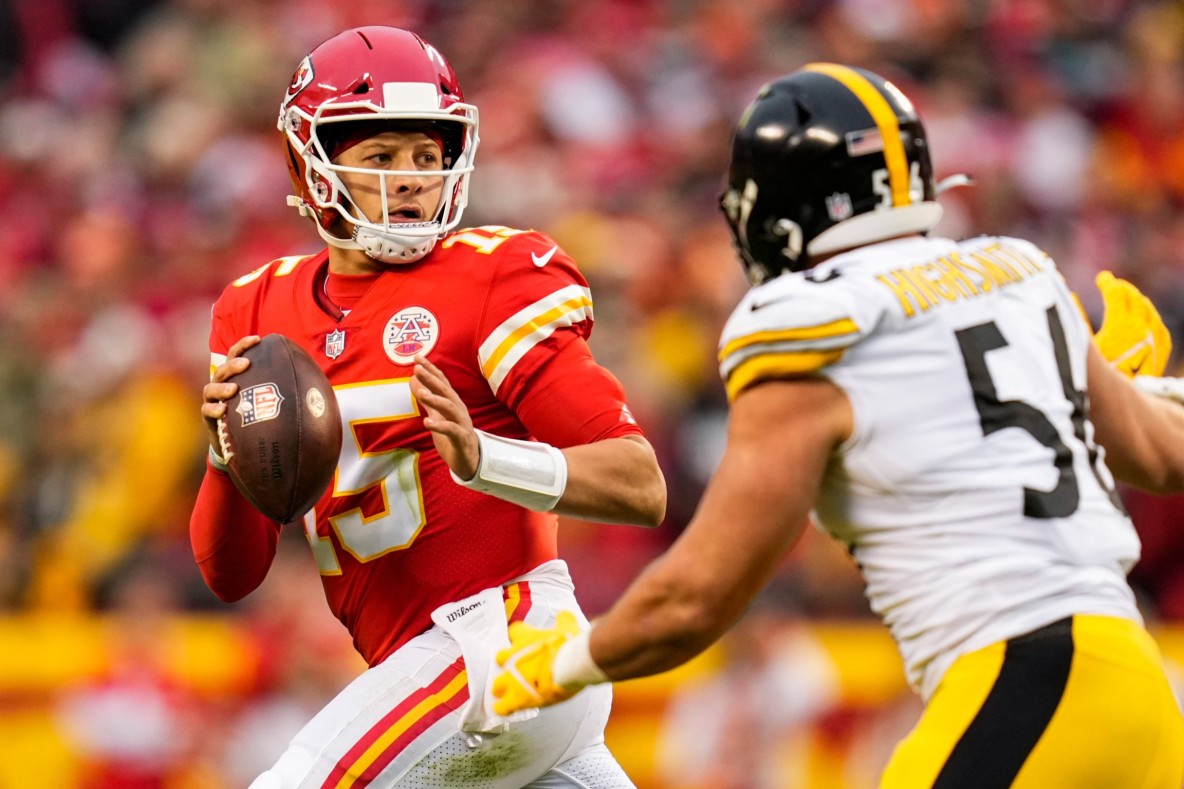Football’s popularity is due in no small part to the amount of stats involved. Where there’s a stat, there’s a potential betting opportunity. Understanding the key stats involved in football games will help you identify the best betting opportunities, both before and on gameday.
-
Score: Score has two meanings in football, one as a verb and one as a noun. To score simply means to accrue points either by recording a touchdown or a safety, or by kicking a field goal. An individual touchdown is also known as a score. For example, a running back who carries the ball into the end zone for a touchdown is said to have completed a scoring run.
-
Yards per play: Yards per play is measured by dividing the number of total yards accrued from the line of scrimmage by the total number of plays executed. For example, if a quarterback makes 40 total pass attempts and accrues 200 passing yards in the process, his yards per play equals 5.0.
-
First downs: Teams on offense have four attempts to move the ball 10 yards down the field. Each attempt is called a “down.” If the team moves 10 or more yards, they earn a fresh set of four downs, and start again with a “first down.” First downs are tracked for statistical purposes, and can be used as an indicator for a team’s ability to move the ball down the field during games.
-
Rushing attempts: As the phrase suggests, rushing attempts are a count of how many times a team’s offense has tried to move the ball by running with it instead of passing it. When a team has a large number of rushing attempts, it is a clear indicator that they are relying on their “ground game” to generate offensive opportunities.
-
Rushing yards: Rushing yards represents the number of yards that the ball has been carried by a single player, or by the entire offense. It can reflect an individual play, or be viewed as a cumulative stat that accounts for the total number of rushing yards gained by all carries over the course of a game.
-
Yards per carry: Similar to yards per play, yards per rush is determined by dividing the total number of rushing yards by the total number of rushing plays. For example, if a running back carries the ball 20 times over the course of a game, and compiles 150 total rushing yards, their Yards per Rush for the match is 7.5.
-
Passing attempts: Passing attempts is simply a count of how many times the quarterback throws a pass. A pass is considered as an attempt regardless of whether or not it is caught by the receiver, or if it is intercepted by a defensive player.
-
Passing yards: Passing yards is the measurement of the number of yards from the line of scrimmage gained from a successful pass or passes. This stat can be applied to individual plays, and are used as a clear indicator of a quarterback’s success over the course of a game or the season.
-
Yards per pass: It is important to distinguish between Yards per Pass Completion and Yards per Pass Attempt. Yards per Pass Completion is determined by dividing the total number of passing yards by the total number of successful passes. For example, if a quarterback completes 20 passes for 200 yards, their Yards per Pass Completion is 10.0.
-
Yards per attempt: Yards per pass attempt is a more widely used statistic. It is determined by dividing the total number of passing yards by the total number of passing attempts, regardless of whether they are successful. Therefore, a quarterback can complete 20 passes for 200 yards, but if it took them 40 attempts, their Yards per Pass Attempt is 5.0.
-
Time of possession: Time of possession is a cumulative measurement of how much time each team has been on offense over the course of an NFL game.
-
Turnovers: A turnover is recorded when the team playing offense loses possession of the ball to the team playing defense. Turnovers can come in a number of forms, but the most common are fumbles and interceptions. A fumble occurs when an offensive player drops the ball during a live play, and it is recovered by the defensive team. An interception occurs when a defensive player catches a pass attempt.
-
Penalties: Penalties are imposed for rule infractions, with the offending team usually being penalized by a loss of yards, a loss of downs, or a loss of a timeout. Common penalties include offside, unsportsmanlike conduct, roughing the passer, pass interference, holding, and illegal blocking.
-
Points per game: Points per game measures the average of how many points an offense scores per game. You can also look out how many points a defense allows per game
-
Red-zone percentage: Red-zone percentage measures how often an offense converts a possession inside its opponents 20-yard line into a touchdown

